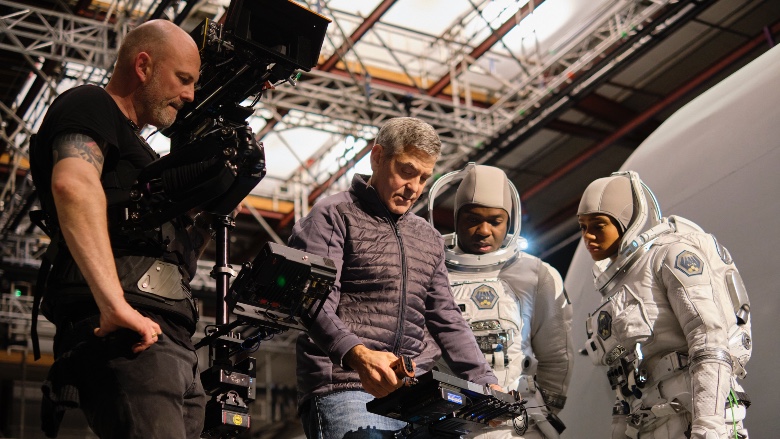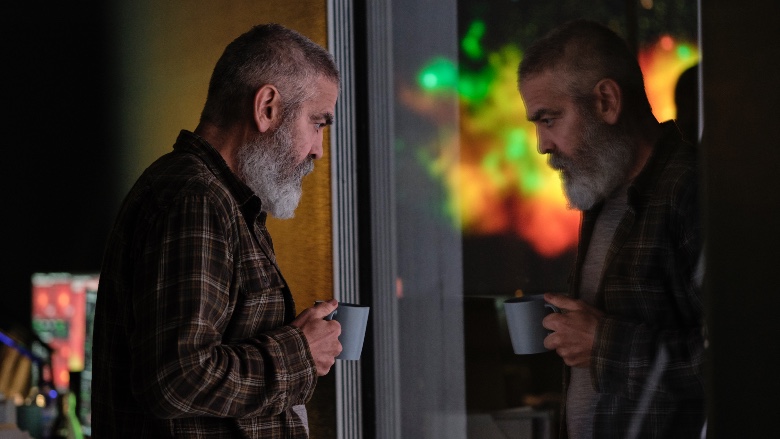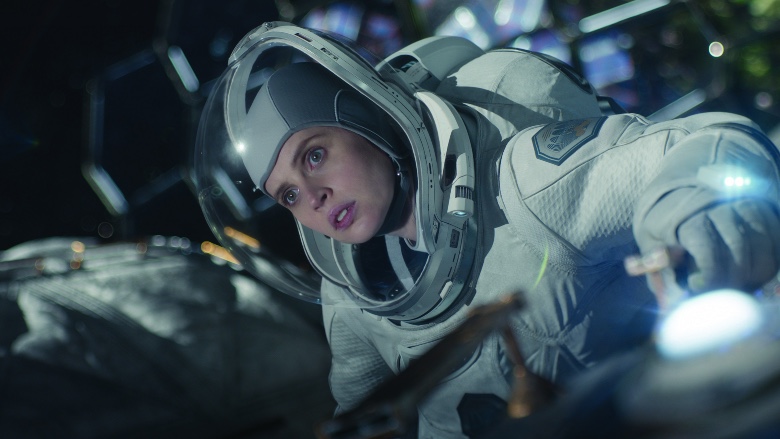
In 2049, a lone, aging astronomer named Augustine, played by George Clooney, looks out with resignation into the star-studded, steely grey skies of the North Pole. Somewhere in that vast expanse, a resolute astronaut named Sully, played by Felicity Jones, stares back, searching for answers and hoping for a better future. This is the intriguing premise of Netflix’s upcoming The Midnight Sky. While the film—directed and produced by Clooney himself—is at times a technical marvel, catnip for crew that may be curious for what sort of techniques Clooney’s Smokehouse Productions has access to, the story ends up feeling lost in space. The emotional gravity of what is at stake for both characters—both of which are inherently likable—is never brought back down to Earth, leaving an otherwise beautiful picture feeling adrift.
The Midnight Sky is based on the Lily Brooks-Dalton novel, Good Morning, Midnight. The novel’s central motif is loneliness at the end of the world—what do we take with us? When humanity is at an end, what memories will matter? How will we behave? What will we do? These are philosophically powerful and even gut-wrenching questions, but they are a hard sell for 120 minutes of screen time. Even Clooney and his talented screenwriter Mark L. Smith (The Revenant), were unable to worm themselves out of the emotional hole created by the original story.

We observe Augustine through Clooney’s tender, physically frail performance, as a lonely man who is both satisfied with what he did with his life and also profoundly full of regret. Soon, he encounters a young girl, Iris (newcomer Caoilinn Springall), who was apparently left behind by his outpost’s other inhabitants as they evacuated for safer pastures. Iris cannot or will not speak, so she is not much cure for Augustine’s loneliness. Augustine has a series of flashbacks about a love he once jilted—scenes which are critically important to the character’s development but which feel stunted and weightless—while desperately trying to communicate with the remaining crews of spaceships sent to explore alternatives to life on Earth. This leads the pair into a couple of scary action sequences, though they do not do much to save the picture from quick extinction.
Soon, we learn that the only crew left includes communications director Sully (Jones) who is herself trying to figure out what is going on with the rest of humanity. Her captain and emotional partner Commander Tom Adewole (David Oyelowo) leads a group that includes Specialist Sanchez (Demian Bichir) and crew members Mitchell (Kyle Chandler) and Maya (Tiffany Boone). Their spaceship bears the flags of the U.S., Mexico, and Nigeria (for its crew members), the one hopeful feature of Brooks-Dalton’s otherwise apocalyptic future. Sully and her mates also face challenges, including meteor showers that evoke Gravity and many other space films from which Clooney borrowed heavily (like Solaris). Like Augustine, Sully is contemplative and thoughtful, hoping for the future but uncertain about it, determining what role she is to play in humanity’s next story.
Clooney and Smith understood that this story was not an easy sell to cinematic audiences. The themes are effective in writing, but it required them to add action sequences not seen in the book. While they may be entertaining, they do not have the gravitational pull to distract us from what is otherwise a bland story. Bland, simply because we cannot get inside these characters’ amazing brains, and even the talented Clooney and Jones cannot make it so.

What the action sequences do do, however, is give us a phenomenal treat of crafty largess that may be sufficient to convince many viewers to tune in. For one, Clooney makes heavy use of a white, blue, and steely grey palette by cinematographer Martin Ruhe, whose most famous other work is the film Harry Brown. Ruhe used a special 58T camera lens for certain sequences, which focuses the viewer on the center of the screen by blurring out the edges. The technique is both distracting and intriguing to look out for in future work. Ruhe’s work, which also includes the Northern skies of the North Pole and the colorful moments in space, particularly in the new planet, is little short of stunning—and another sad reminder that these films need to be scene in the big screen. Though Midnight Sky may not make it far, Ruhe should be seriously considered for an Oscar nomination.
Also noteworthy is the VFX work led by Matt Kasmir. Kasmir had to construct an Arctic ice storm, to terrifying results in addition to the mentioned asteroid showers, and overall spacewalk effects. The most stunning, though, is a scene where a character is bleeding in a zero-gravity environment, and the others remove the space helmet in the character’s aid. The resulting blood pellet dispersion sequence is by far the movie’s most memorable.
Savvy tech viewers will surely also notice the sprawling score by Alexandre Desplat, one of The Midnight Sky’s few tech misses. Desplat merges elements of his most playful, his most suspenseful, and his most emotional scores, to create vignettes that are powerful and effective but that combine into an amalgam with no recognizable thematic center. The work by makeup artist Natasha Nikolic also stood out, particularly with respect to Clooney’s aging, freezing beard, and one ghastly sequence with a stranded survivor.
The Midnight Sky will play in some theaters starting Friday, December 11, then stream on Netflix starting December 25.
All photos courtesy of Netflix.





